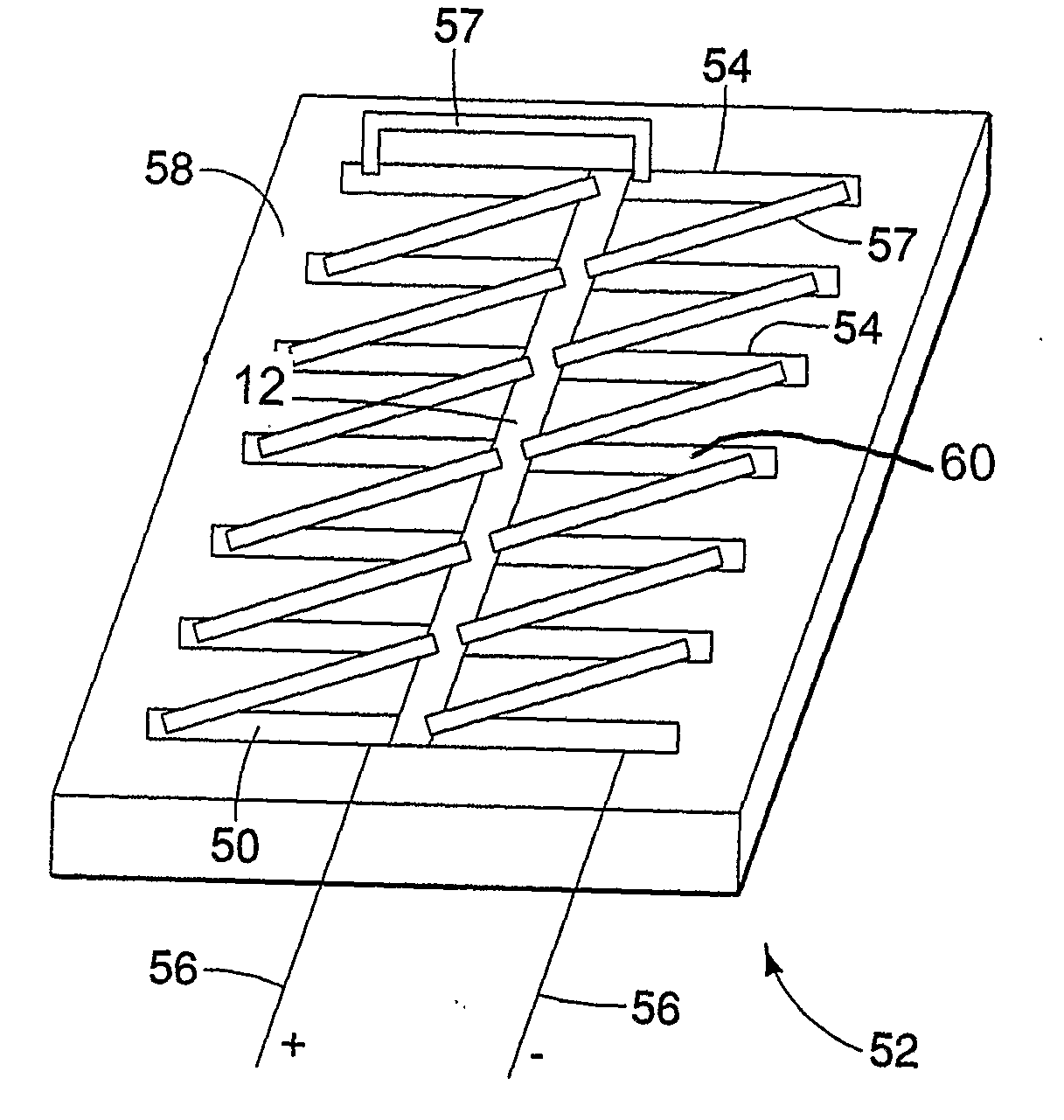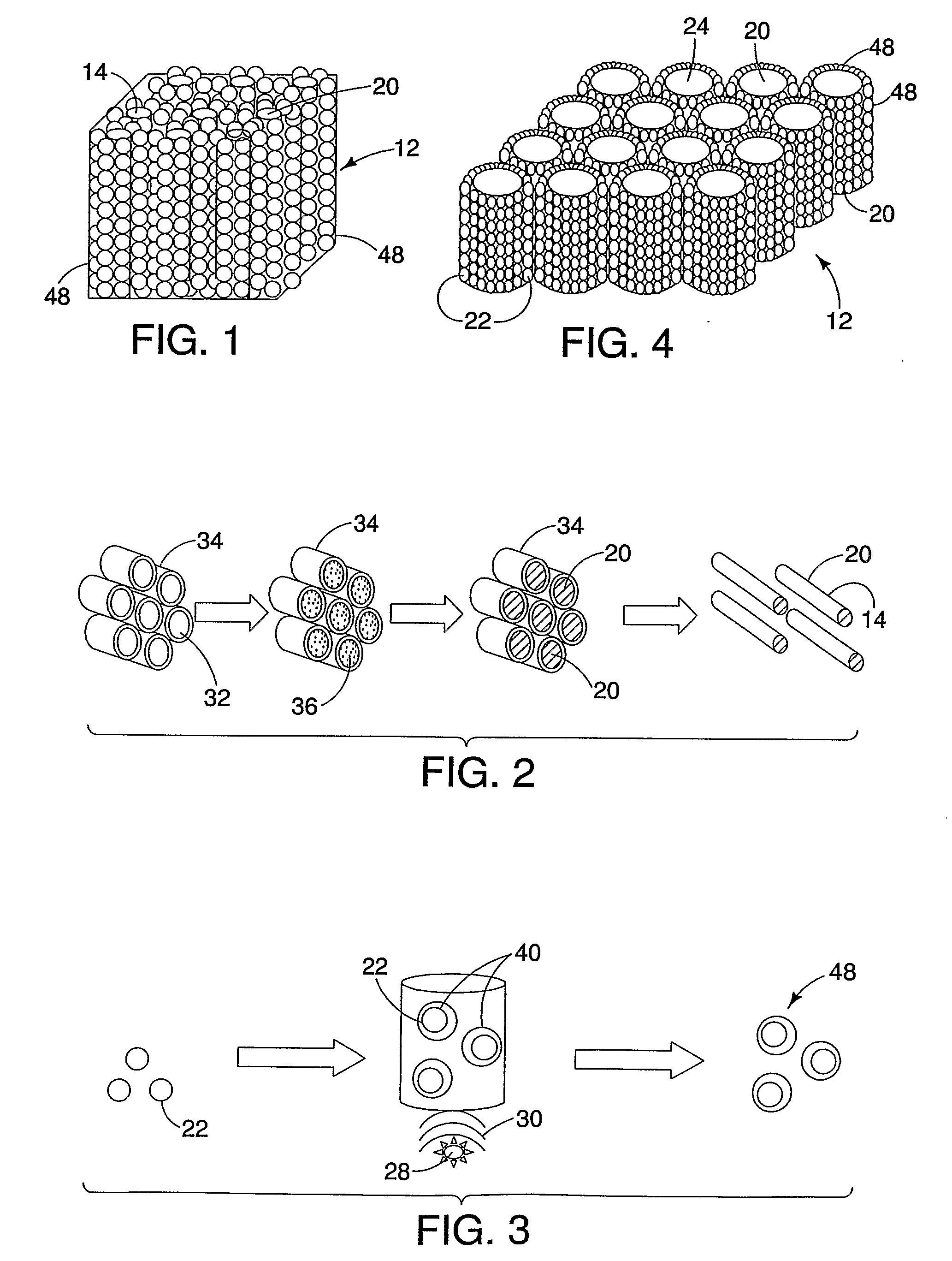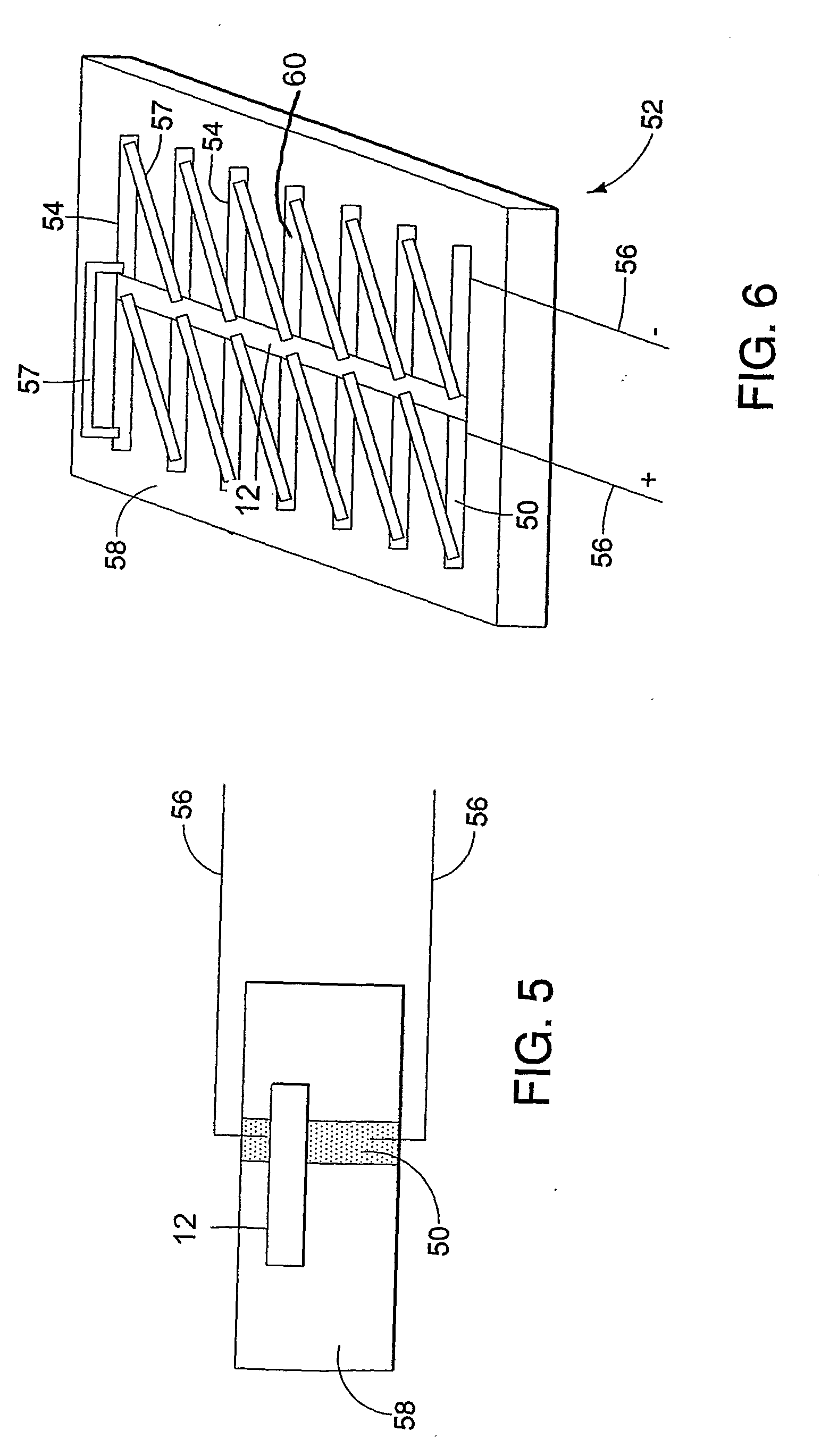Shock Wave and Power Generation Using on-Chip Nanoenergetic Material
- Summary
- Abstract
- Description
- Claims
- Application Information
AI Technical Summary
Benefits of technology
Problems solved by technology
Method used
Image
Examples
example 1
[0074]A device shown in FIG. 5 was fabricated where a clean glass substrate was coated with sputtered platinum film with Al wire connections on both sides for creating junctions and a dispersed thermite comprising nanorods of CuO and aluminum (wt.—10-20 mg) on one Pt / Al junction. An impact initiation was utilized to trigger a thermite reaction. A standard weight of 200 g was dropped from a height of 20 cm over the thermite. Due to a temperature differential between two Pt / Al junctions over the platinum film, voltage was generated, which was recorded using a data acquisition card (DAQ) and LabVIEW program. A voltage pulse of about 0.3 V peak voltage and 126 microsecond width at FWHM was generated using one Pt / Al (platinum film) transducer (FIG. 2). From the generated voltage value, the seebeck coefficient of platinum is calculated to be about 17 μV / ° C. This generated voltage of 0.3V is the open circuit voltage. To calculate the power and conversion efficiency, a load resistor is use...
example 2
[0075]From our experiment of one platinum strip, the rise time of the open circuit output voltage is 100 μS and fall time is 360 μS. Total response time is 460 US. Taking the speed of the propagation of the energetic reaction of 2300 m / S, the reaction propagates 1380 mm in 460 μS. Taking the width of one platinum strip 3 mm and the gap between two strips 3 mm, the total number of platinum strips in 1380 mm is 230. In a device similar to the design of FIG. 6, 460 platinum strips are placed within that distance. By the time the generated voltage from first platinum strip goes zero the voltage of 460th platinum strip starts to rise. So 460 platinum strips work as a voltage generator connected in series at the same time. Because, all platinum strips do not generate equal voltage at the same time, the peak output voltage will be the sum of all 460 voltage generators and that is 0.3*460 / 2=69 V. More voltage is generated using thinner platinum strips which allow more strips within the dist...
example 3
[0077]A schematic of the millimeter scale device is shown in FIG. 8. Wells were made by gluing a thick LEXAN® brand polycarbonate substrate containing a pre-drilled through-hole to a glass substrate. The glass substrate had a sputtered thin-film heater composed of platinum on a titanium adhesion layer. The LEXAN® brand polycarbonate substrate is positioned such that the hole in it is aligned over the heating element of the Pt film. Leads are soldered to the metal film to allow connection to the heater. The hole was then packed with MIC powder using a Teflon spatula. The 5-15 mg of MIC material was a composite consisting of CuO nanorods with Al particles assembled on the surface of the nanorods. The diameter of the wells tested varied from 1.6 mm to 2.38 mm. A variation of this device can be made in which a thin elastic membrane can be placed over the opening of the well. In preliminary testing, a 1 mm thick polydimethylsiloxane (“PDMS”) membrane was glued on the top of the well afte...
PUM
 Login to View More
Login to View More Abstract
Description
Claims
Application Information
 Login to View More
Login to View More - R&D
- Intellectual Property
- Life Sciences
- Materials
- Tech Scout
- Unparalleled Data Quality
- Higher Quality Content
- 60% Fewer Hallucinations
Browse by: Latest US Patents, China's latest patents, Technical Efficacy Thesaurus, Application Domain, Technology Topic, Popular Technical Reports.
© 2025 PatSnap. All rights reserved.Legal|Privacy policy|Modern Slavery Act Transparency Statement|Sitemap|About US| Contact US: help@patsnap.com



